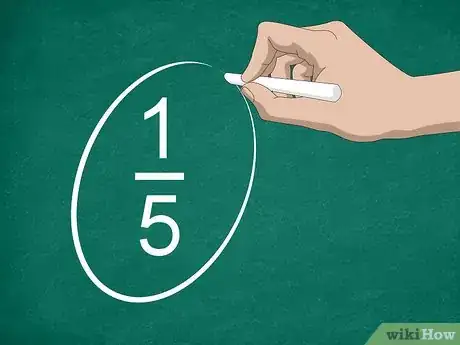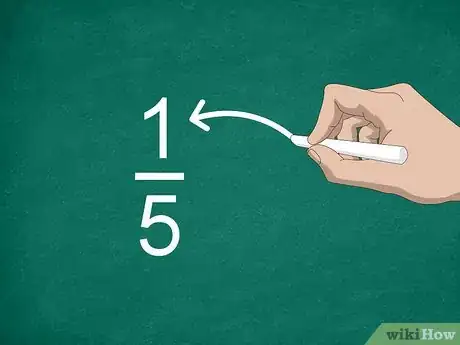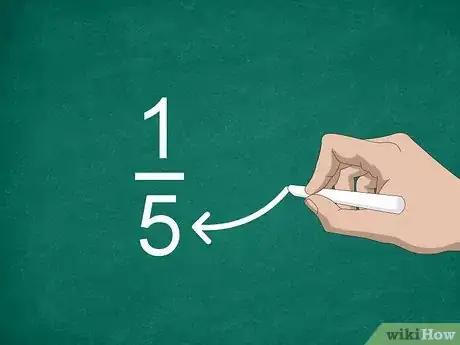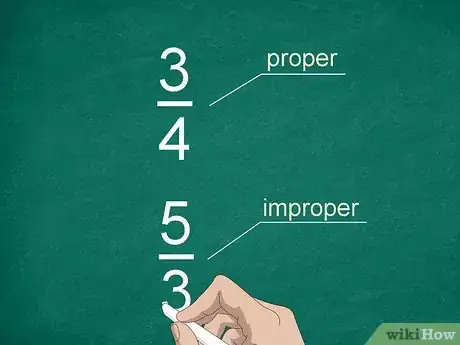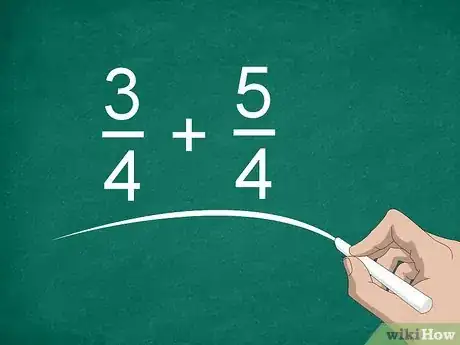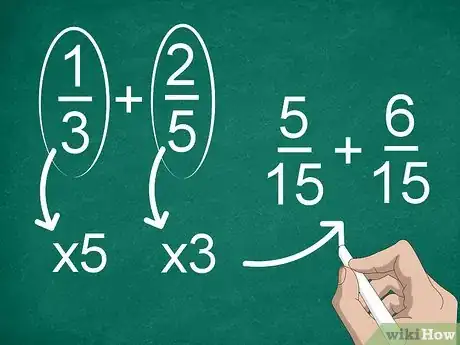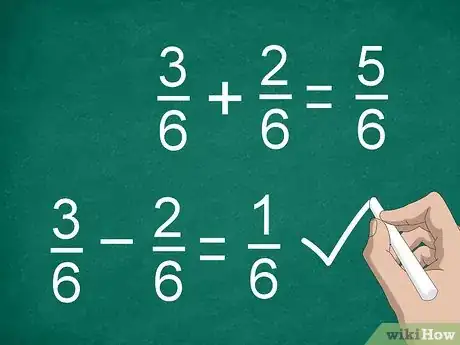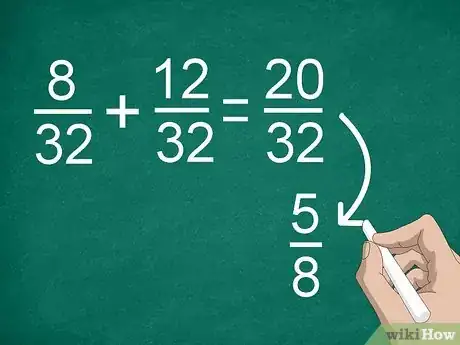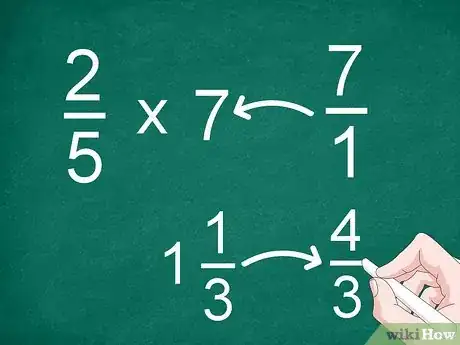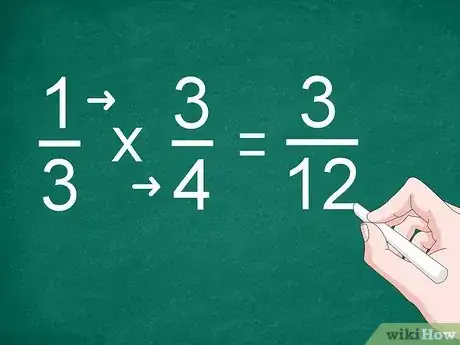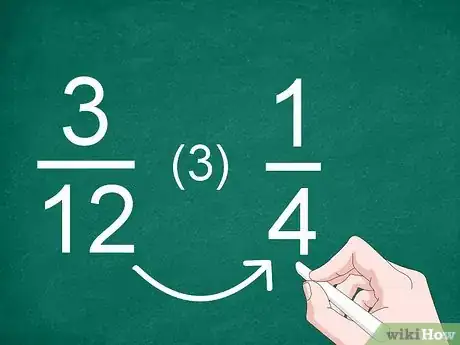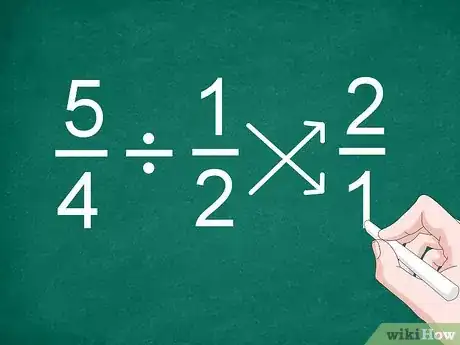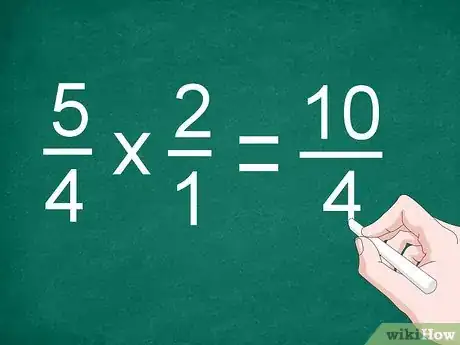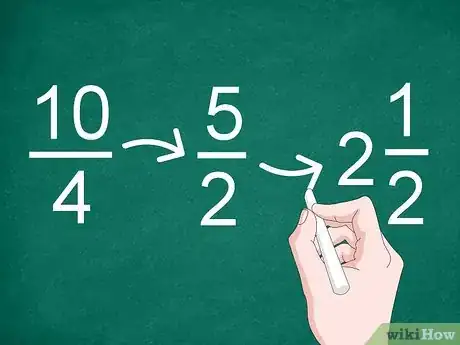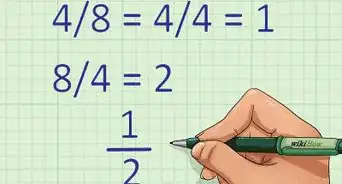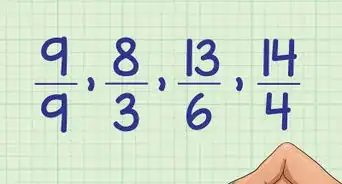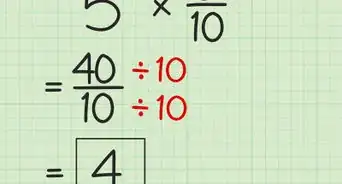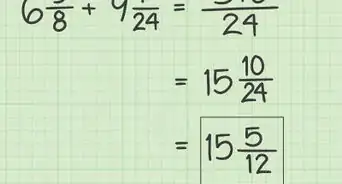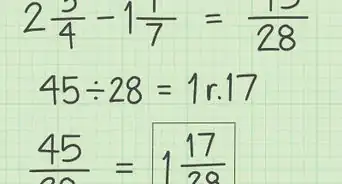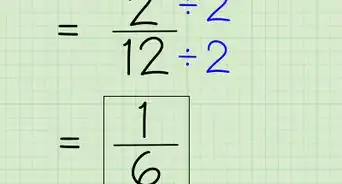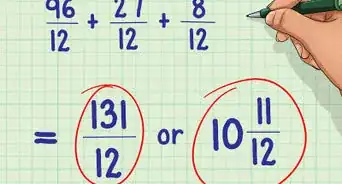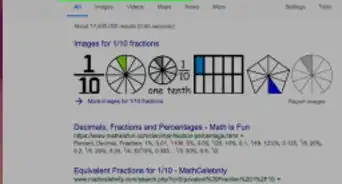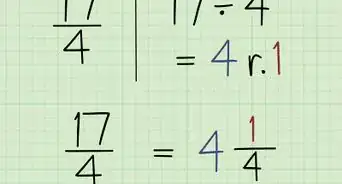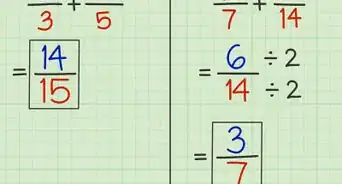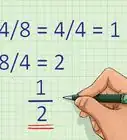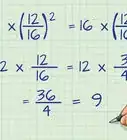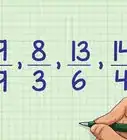This article was co-authored by David Jia and by wikiHow staff writer, Jessica Gibson. David Jia is an Academic Tutor and the Founder of LA Math Tutoring, a private tutoring company based in Los Angeles, California. With over 10 years of teaching experience, David works with students of all ages and grades in various subjects, as well as college admissions counseling and test preparation for the SAT, ACT, ISEE, and more. After attaining a perfect 800 math score and a 690 English score on the SAT, David was awarded the Dickinson Scholarship from the University of Miami, where he graduated with a Bachelor’s degree in Business Administration. Additionally, David has worked as an instructor for online videos for textbook companies such as Larson Texts, Big Ideas Learning, and Big Ideas Math.
There are 7 references cited in this article, which can be found at the bottom of the page.
This article has been viewed 85,421 times.
Calculating fractions are one of the most useful math skills to develop. Before you begin working with them, learn how to identify parts and types of fractions. Then you can move on to adding and subtracting them. For more complex calculations, learn how to multiply and divide them. In most cases, you'll also need to simplify or reduce the fraction.
Steps
Recognizing the Parts of a Fraction
-
1Find a fraction. Fractions are written as 1 number placed over a dividing line with 1 number below it.
-
2Identify the numerator. The number on top is called the numerator and it tells you how many parts of the fraction there are.[1]
- For example, in the fraction 1/5, 1 is the numerator.
Advertisement -
3Locate the denominator. The number on the bottom is called the denominator. This number tells you how many parts make up the whole number.[2]
- For example, in the fraction 1/5, 5 is the denominator so there should be 5 parts in the fraction.
-
4Determine if the fraction is proper or improper. If the numerator is less than the denominator, the fraction is proper. For an improper fraction, the numerator is greater than the denominator.[3]
- For example, 3/4 is a proper fraction and 5/3 is an improper fraction.
- If you have a whole number with a fraction, it's called a mixed fraction. For example, 1 1/2 is a mixed fraction.
Adding or Subtracting Fractions
-
1Identify fractions with like denominators. If you need to add or subtract fractions, they need to have common denominators before you make your calculations. Look at the denominator on the fractions to see if they're the same (like).
-
2Find a common denominator if the denominators are unlike. If your denominators aren't the same, you'll need to change the fractions so they have the same denominators. To find a common denominator, multiply each part of a fraction by the denominator of the other fraction.[4]
- For example, to find a common denominator for 1/3 + 2/5, multiply the 1 and 3 by 5 and multiply the 2 and 5 by 3. You should get 5/15 + 6/15. Then you can calculate the fractions.
-
3Add or subtract the numerators to calculate the fractions. Once you've found a common denominator and multiplied the numerators if necessary, you're ready to add or subtract. Add or subtract the numerators and place the result over a dividing line. Put the common denominator below the line.[5]
- For example, 3/6 - 2/6 = 1/6.
- Avoid adding or subtracting denominators.
-
4Simply the sum if necessary. If you've had to find a common denominator, you may end up with a large fraction that can be simplified. For example, if you added 8/32 +12/32, you'd get 20/32. This can be reduced to 5/8.[6]
Multiplying and Simplifying Fractions
-
1Turn mixed fractions or whole numbers into improper fractions. To make it easier to multiply, you'll need to work with proper or improper fractions. If you have a whole number or mixed fraction that you want to multiply, turn it into its fraction.
- For example, to multiply 2/5 by 7, turn 7 into a fraction. Then you can multiply 2/5 by 7/1.
- If you have a mixed fraction such as 1 1/3, turn it into an improper fraction, 4/3 before you multiply.
-
2Multiply the numerators and denominators. Instead of adding the numerators, multiply both of them and write the result over your dividing line. You'll also need to multiply the denominators and put the result under the line.[7]
- For example, to multiply 1/3 by 3/4, multiply 1 by 3 to get the numerator. Multiply 3 by 4 to get the denominator. Your answer will be 3/12.
-
3Simplify your result. In many cases, you'll need to reduce the result to a simplified fraction, especially if you started with improper fractions.Identify the greatest common factor and use it to simplify the numerator and denominator.[8]
- For example, if your answer is 3/12, 3 is the greatest common factor. Reduce the fraction by 3 to get 1/4.
Dividing Fractions
-
1Invert the second fraction. The simplest way to divide fractions, even those with unlike denominators, is to flip the second fraction before you calculate the sum.
- For example, with 5/4 ÷ 1/2 you should flip the 1/2 fraction so it appears as 2/1.
-
2Multiply the numerators and denominators. Multiply the fractions straight across to multiply the numerators. Put the result over a dividing line and multiply the denominators. Put the result under the dividing line.[9]
- To continue the example, you'd multiply 5/4 by 2/1 to get 10/4.
-
3Simplify the results, if needed. If your answer is an improper fraction or can be reduced, simplify the fraction. Use the greatest common factor to reduce the fraction.[10]
- For example, the greatest common factor for 10/4 is 2 so your simplified answer is 5/2.
- Since this is an improper fraction, turn it into a whole number with a fraction. 5/2 becomes 2 1/2.
Community Q&A
-
QuestionWhat is 5/8 times 16?
 DonaganTop AnswererTo multiply a fraction by a whole number, multiply the numerator by the whole number to get the new numerator. The denominator remains unchanged. (5/8)(16) = 80/8 = 10.
DonaganTop AnswererTo multiply a fraction by a whole number, multiply the numerator by the whole number to get the new numerator. The denominator remains unchanged. (5/8)(16) = 80/8 = 10. -
QuestionHow do I calculate 2/3 × -5/6?
 DonaganTop Answerer(2/3)(-5/6) = [(2)(-5)] / [(3)(6)] = -10/18 = -5/9.
DonaganTop Answerer(2/3)(-5/6) = [(2)(-5)] / [(3)(6)] = -10/18 = -5/9.
References
- ↑ https://www.cuemath.com/numbers/fractions/
- ↑ https://www.cuemath.com/numbers/fractions/
- ↑ https://www.cuemath.com/numbers/fractions/
- ↑ https://www.mathsisfun.com/numbers/common-denominator.html
- ↑ https://edu.gcfglobal.org/en/fractions/adding-and-subtracting-fractions/1/
- ↑ https://www.mathsisfun.com/simplifying-fractions.html
- ↑ https://www.cuemath.com/numbers/multiplying-fractions/
- ↑ https://www.mathsisfun.com/simplifying-fractions.html
- ↑ https://www.cuemath.com/numbers/division-of-fractions/
About This Article
To calculate fractions by adding or subtracting, start by finding a common denominator of the two numbers. Simply multiply the fraction by the denominator of the other fraction to make the denominators the same. For example, to find a common denominator for 1/3 + 2/5, multiply the 1 and 3 by 5 and multiply the 2 and 5 by 3 to get 5/15 + 6/15. Then, add or subtract the numerators, and use the common denominator as the denominator for your answer. For example, 5/15 + 6/15 would be 11/16. Be sure to simplify your answer if possible! If you want to learn how to multiply fractions together, keep reading the article!
